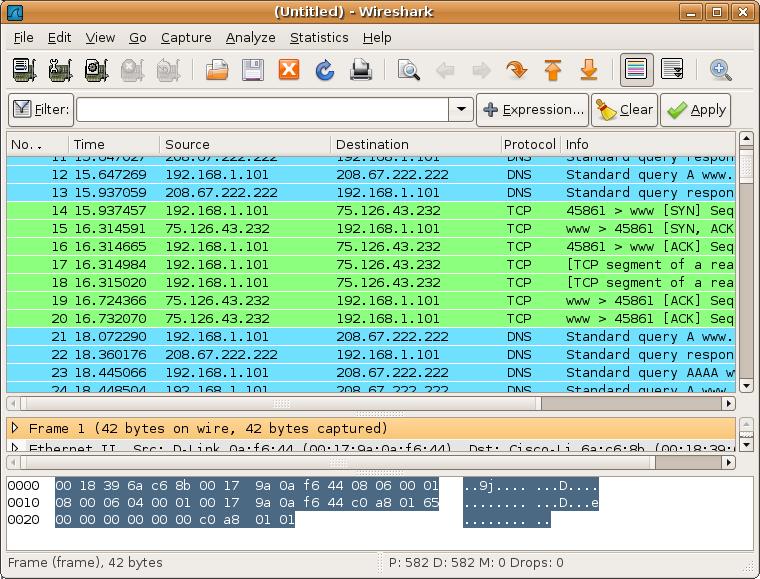


- #Ip wireshark how to
- #Ip wireshark archive
- #Ip wireshark windows 10
- #Ip wireshark password
- #Ip wireshark download
If you are using Wireshark version 3.x, scroll down to TLS and select it. If you are using Wireshark version 2.x, scroll down until you find SSL and select it. Selecting Protocols in the Preferences Menu. On the left side of the Preferences Menu, click on Protocols, as shown in Figure 9. Getting to the Preferences Menu in Wireshark. Then use the menu path Edit -> Preferences to bring up the Preferences Menu, as shown in Figure 8. Open Wireshark-tutorial-on-decrypting-HTTPS-SSL-TLS-traffic.pcap in Wireshark. Viewing the pcap in Wireshark using the basic web filter without any decryption. Without the key log file, we cannot see any details of the traffic, just the IP addresses, TCP ports and domain names, as shown in Figure 7. All web traffic, including the infection activity, is HTTPS.

#Ip wireshark windows 10
This pcap is from a Dridex malware infection on a Windows 10 host. Use a basic web filter as described in this previous tutorial about Wireshark filters.
#Ip wireshark password
Use infected as the password to extract the pcap and key log file from the ZIP archive.
#Ip wireshark archive
Downloading the ZIP archive for this tutorial. Github repository with link to ZIP archive used for this tutorial. As always, we recommend you exercise caution and follow steps from this tutorial in a non-Windows environment. Of note, the pcap contained in this ZIP archive provides access to a Windows-based malware sample when decrypted with the key log.
#Ip wireshark download
Go to the Github page, click on the ZIP archive entry, then download it as shown in Figures 4 and 5. Example of a Pcap With a Key Log FileĪ password-protected ZIP archive containing the pcap and its key log file is available at this Github repository. If no such file was created when the pcap was recorded, you cannot decrypt HTTPS traffic in that pcap. These logs are created using a Man in the Middle (MitM) technique when the pcap is originally recorded. TCP stream of HTTPS traffic to and from server at Encryption Key Log FileĪn encryption key log is a text file. Following the Transmission Control Protocol (TCP) stream from a pcap will not reveal the content of this traffic because it is encrypted. Unfortunately, we don’t know other details like the actual URL or data returned from the server. For example, when viewing in a web browser, a pcap would show as the server name for this traffic when viewed in a customized Wireshark column display. HTTPS traffic often reveals a domain name. Today most HTTPS traffic uses Transport Layer Security (TLS). These tunnels first used Secure Sockets Layer (SSL) as an encryption protocol. HTTPS is essentially an encrypted communications tunnel containing HTTP traffic. However, as security became an increasing concern, websites started switching to HTTPS, and now we rarely see HTTP traffic from web browsing. In the mid- to late-1990s, the most common protocol used by websites was Hypertext Transfer Protocol (HTTP), which generated unencrypted web traffic. We recommend you review this pcap in a non-Windows environment like BSD, Linux or macOS if at all possible. There is a risk of infection if using a Windows computer. Warning: The pcap used for this tutorial contains Windows-based malware. Here is a Github repository with a ZIP archive containing the pcap and a key log file used for this tutorial. Note: Our instructions assume you have customized your Wireshark column display as previously described in “ Customizing Wireshark – Changing Your Column Display.”. Today, we will examine HTTPS activity from a Dridex malware infection. With this key log file, we can decrypt HTTPS activity in a pcap and review its contents. Decryption is possible with a text-based log containing encryption key data captured when the pcap was originally recorded.
#Ip wireshark how to
This Wireshark tutorial describes how to decrypt HTTPS traffic from a pcap in Wireshark. When reviewing pcaps from malware activity, it’s very helpful to know what’s contained within post-infection traffic. But like most websites, various types of malware also use HTTPS. Why? Because most websites use the Hypertext Transfer Protocol Secure (HTTPS) protocol. When reviewing suspicious network activity, we often run across encrypted traffic. The instructions assume you are familiar with Wireshark, and it focuses on Wireshark version 3.x. This tutorial is designed for security professionals who investigate suspicious network activity and review packet captures (pcaps) of the traffic.


 0 kommentar(er)
0 kommentar(er)
